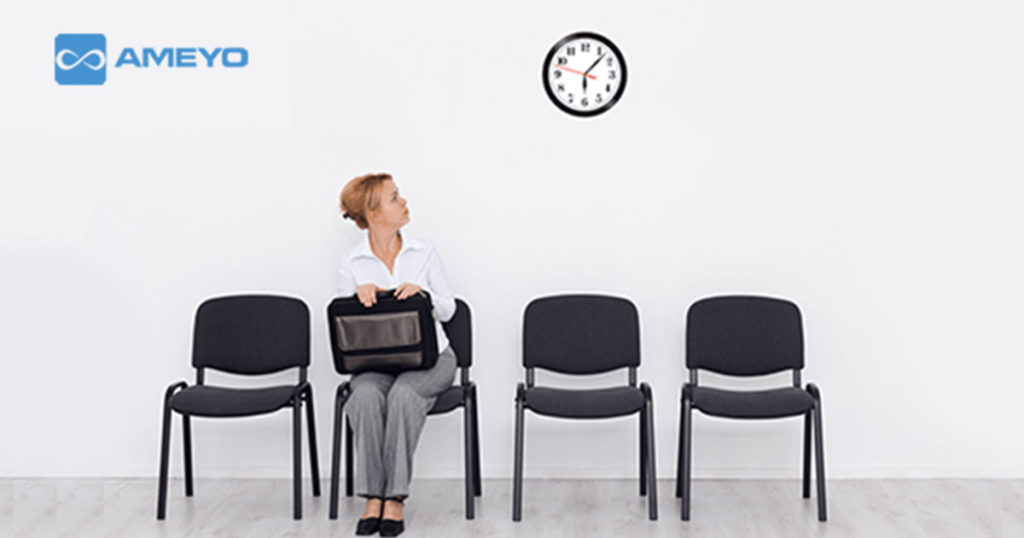If the waiting time in queue in your contact center is uncomfortably long for your customers who call, invariably some callers would hang up in disgust. Even if an agent calls back, the customer may be uncooperative or may decide against having any kind of transaction or business with the contact center.
Now this, in turn, can have a spiral or domino effect. A disgruntled customer would surely register complaints against the lack of proper service received from your company. This would usually spread like a wildfire in the customer circle. You can be rest assured that similar incidents would be recorded as more customers would use the same method of grievance redressal.
That means your business would take a hit. One of the major reasons for the existence of a call center is to ameliorate the problems for which callers seek assistance. If it cannot provide proper customer service, it is only natural that customers would soon become ex-customers.
What is Estimated Wait Time and what are the problems associated with lengthy wait times?
Estimated wait time is the average time that callers have to wait in a call center queue, from the time a caller successfully navigates through all the IVR prompts till the time an agent answers the call. The higher the wait time, the lower will be the customer satisfaction and higher will be the chances of call abandonment. This is also directly related to customer churn rate.
Related: How to Minimize Customer Frustration with Estimated Wait Time
There are also other problems like higher handle rate meaning the customer once connected to the agent after the long wait is more likely to channel out their frustration and that would reduce the efficiency of the agent as well as the inbound call center as the average speed of mitigating a problem would increase. With more customer gripe, the number of escalated calls to the higher management would increase, meaning a part of the productive time would be wasted in calming the frayed nerves of irascible customers, and trying to talk them out of registering formal complaints.
After a long wait, the customer will be in a bad mood. That would mean that they would be less cooperative with the agents and chances of finding a solution with the first call would go down. A problem that could have been solved through a single call will now require multiple follow-up calls to understand the problem effectively and offer a solution.
Why are wait times often long?
The biggest problem is that a lot of contact centers are using outdated software, not capable of predicting wait times on an average. As a result, the customer is in the dark about the length for which he/she would have to hold onto the receiver.
Sometimes the ACD or predictive dialer takes much time to match the skills of the agents required to handle your call with those available. To ensure that the match is as close to perfect as possible, it matches your profile and your problem with the profile of the agents. That takes some time.
Understaffing is often a major problem, especially during a crunch time. Moreover, if agents have to spend more time on critical calls, the wait time in the queue would go up. Sometimes, because of the urgency of these critical calls, they are brought to the front of the queue, while you wait with your problem.
Some IVRs gives you the option of hanging up and receiving a call back if you have been in the queue longer than the average time. So, a predictive dialer predicts that an agent would be available in about 15 minutes to call back but puts through the call within 12 to 13 minutes. That person would automatically come in front of you in the queue. Other reasons could be that a priority customer may also be in the queue and they would get quicker resolution.
What are the solutions?
The first and most obvious solution, is, to have optimum staffing, especially during peak hours. With that, more lines could be kept operational. More resources would amount to better output.
Immediately upgrade to more modern and intuitive technologies. You will have to optimally configure the queue settings to reduce the wait time. The modern software gives your callers multiple options. Use these features. The options could range from call back to prompting the caller to leave a voice message with an assurance of a call back within a certain period with a solution. It could even automatically divert the caller to a messaging platform to leave a message or interact with a chatbot, if the wait time prolongs beyond the contact center average or if the size of the queue becomes longer than acceptable.
These help to cut down the excessive wait time and improve efficiency. Your customers will be less likely to feel aggrieved. Estimated queue time is an important key performance indicator for any contact center. Neglect it at your own peril.
